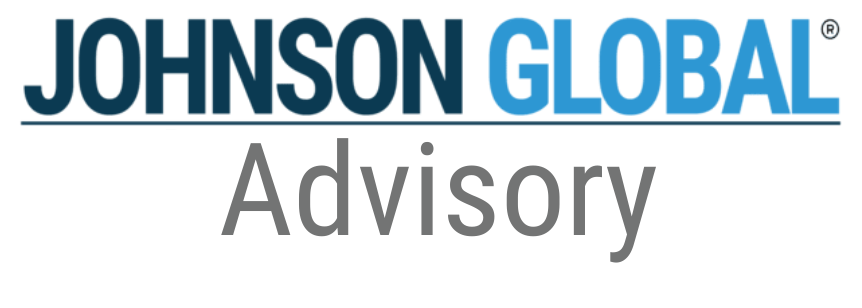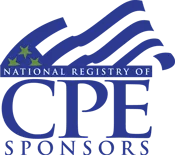New Concerns around Going Concern: Is Management Properly Prepared?

It seems like a lifetime ago, but back in early 2020 and continuing into 2021, consideration of a company’s ability to continue as a going concern was top of mind for both management teams and their auditors due to the global COVID-19 pandemic. Back then, going concern considerations were necessary due to shutdowns, mask mandates, employees having to work remotely – many employees were laid off or furloughed, which led to a drop in consumer demand especially in industries such as retail, travel, entertainment, and service industries and a drop in manufacturing / production. In April 2020, our article Weathering the Storm: Auditing Going Concern in an Age of Economic Uncertainty discussed how auditors should have reacted to the address going concern during the global pandemic.
Starting in 2021 and continuing into 2022 we now have different concerns being raised. The global economy has been affected by truly worldwide events – the great resignation has resulted in severe labor shortages in many industries, rapidly rising consumer demand has led to supply chain shortages, the recent microchip shortage resulted in a ripple effect across many industries that use microchips and semiconductors in their products, the war in Ukraine and resulting Russian sanctions has affected the supply of goods from Ukraine and Russia, rising costs of almost every commodity (gas, food, labor), and rising interest rates. All of these are causing companies to reassess and alter their typical business models to respond to the new norm. Companies are experiencing the pressure of higher wages and/or higher raw material costs while trying to pass these costs along to consumers, seeking out alternative supplies of goods and raw materials to mitigate the supply chain delays, and continuing to transition to a greater web presence for sales of goods and services.
The old way of doing business has had to change.
What is an auditor’s responsibility?
With all this change in the business model, we thought we should revisit what is required from an auditor based on the PCAOB’s Auditing Standard (AS) 2415.
Firstly, it is not necessary that an auditor design audit procedures to specifically identify conditions or events that would indicate there is substantial doubt about a company’s ability to operate as a going concern for a reasonable period of time. These going concern indicators can come about from other procedures that the auditor performs as part of his/her regular auditing procedures, such as when performing analytical procedures, reviews of compliance with loans or loan covenants, legal counsel inquiries, and when reading various company minutes. The auditor should not ignore any information identified that calls into question a company’s ability to operate as a going concern. Such information is disconfirming information that needs to be evaluated, and most important of all, the evaluation must be documented in the workpapers. Often when we support our audit firm clients though in-flight reviews, we see red flags that make us step back and ask engagement teams how they addressed this information. These issues usually call into question the company’s ability to continue as a going concern and frankly these important discussion are not happening with management early enough.
As an auditor is working through his/her procedures, here are some other considerations that auditors should consider:
- How are a company’s supply chain issues affecting its ability to service its customers and keep their customers happy before they decide to shop elsewhere?
Are legacy large customers now looking to other avenues to find suppliers of product? Even in Great Britain, the long staple corner fish and chip shop, is not immune. The supply and costs of cod and fish oil has been
devastating for thousands of shops.
- Is the ‘great resignation’ labor shortage affecting the company’s ability to manufacture product, develop new product, perform quality controls on its current product? One just has to look at the current US baby formula shortage. The domestic supply of formula is controlled by a handful of manufacturers. COVID-19 had already created significant supply chain issues and when one of the largest manufacturers had to shut down one of its manufacturing facilities due to tainted goods, that caused significant upheaval and shortages in the baby formula industry.
- How are rising interest rates affecting the company you’re auditing? How is that affecting the monthly cash flows for existing variable interest rate debt? Is interest expense eating into already slim margins and the company’s available cash flows?
If these types of questions are coming up on your audit, and you conclude based on your considerations that a substantial doubt about the ability of the company to continue as a going concern exists, the auditor should look to obtain information about management's plans and:
- Consider whether these plans will mitigate these adverse effects for a reasonable period of time; and
- That these plans can be effectively implemented.
The standard provides some examples of considerations that the auditor should make in order to reach a conclusion:
Plans to reduce or postpone expenditures – how feasible is management’s plans to be able to effectively reduce overhead or administrative expenses? Would management delay important machinery maintenance expenses if it affected the useful lives of currently used machinery? Can machinery sit idle for an extended period of time without damage?
Plans to increase ownership equity – how feasible is it that management can increase ownership equity through raising additional capital? Are there already pre-existing commitments to raise additional capital? Just because a company was successful in the past in raising capital, it does not automatically correlate that it would be successful in today’s climate.
Plans to borrow money or restructure its current debt – Consider whether the company currently has access to lines of credit or if not, that there is availability of debt financing. Similar to the point above, just because a company has been successful in the past in borrowing money or being able to restructure their debt, it doesn’t mean this will happen in this environment.
As we coach our audit clients in this area, oftentimes we see auditors evaluating management’s plans by merely having conversations with management, without obtaining appropriate evidence and challenging management on the feasibility of their plans. For example, a general discussion with management on reducing or postponing expenses is insufficient. Management should put pen to paper with specifics about forecasts for the next 12 months (i.e. including appropriate assumptions such as reducing general office headcount by x%, reducing marketing budget by $Y, etc.). The auditor should then demonstrate professional skepticism and examine any available evidence (and contrary evidence) to confirm the plausibility of management’s plans (e.g. is it really feasible that management will not do ANY equipment maintenance in the next 12 months). As part of an auditor’s evaluation, particular focus should be given to assumptions that are:
- Very sensitive to change
– Consider a trucking company where gas is a significant cost, which would be affected by swings in the gas rate.
- Not consistent with historical trends – The difficulty here is that the COVID-19 has reset many historical trends such that is it reasonable to assume that a business will return to pre-COVID sales and operation levels – so is it appropriate to compare to historical trends?
- Material to the prospective financial information.
Finally, if the auditor concludes after evaluating management’s plans that substantial doubt about the company’s going concern has been alleviated, the auditor still needs to assess the need for disclosure of the principal conditions and events that initially caused him/her to believe there was substantial doubt. We have also seen SEC comment letters recently where the company has disclosed conditions that raised substantial doubt about its ability to continue as a going concern and the SEC has asked whether the auditor assessed the company’s ability to continue as a going concern and how the auditor concluded that an explanatory paragraph in the audit opinion was not considered necessary.
Clearly, going concern is still top of mind at the SEC and the auditor should thus have good documentation of procedures it has performed to be able to conclude why an emphasis of matter paragraph in the opinion is not necessary.
Points to consider
Here are also a few additional points for auditors to consider as they evaluate going concern:
- Evaluate early – If the audit has any inkling that going concern may be an issue for the client, make sure to start having those discussions with management early in the audit process. Don’t wait until the 11th hour.
- Communicate to audit committee – Be mindful that AS 1301 requires that the auditor communicate to the audit committee its evaluation of a company’s ability to continue as a going concern.
- Evaluate as a Critical Audit Matter (CAM) – Typically going concern determinations are going to meet the definition of CAMs because they are challenging, subjective, or complex and also that the going concern conclusions are required to be communicated to the audit committee.
In summary, always have going concern top of mind. Back in the midst of the COVID pandemic, it was pretty obvious that auditors needed to assess going concern. However, the COVID pandemic has now been replaced with new and different global considerations, and which auditors should not be ignoring as they deal with a company’s ability to continue as a going concern for a reasonable period of time
Geoff Dingle, JGA Managing Director, works with PCAOB-registered accounting firms helping them identify, develop, and implement opportunities to improve audit quality. With over 20 years of public accounting experience, he spent nearly half of his career at the PCAOB where he conducted inspections of audits and quality control. Geoff has extensive experience in audits of ICFR and firms’ systems of quality controls. Prior to the PCAOB, he worked on audits in various industries at Deloitte in Atlanta and Durban (South Africa).
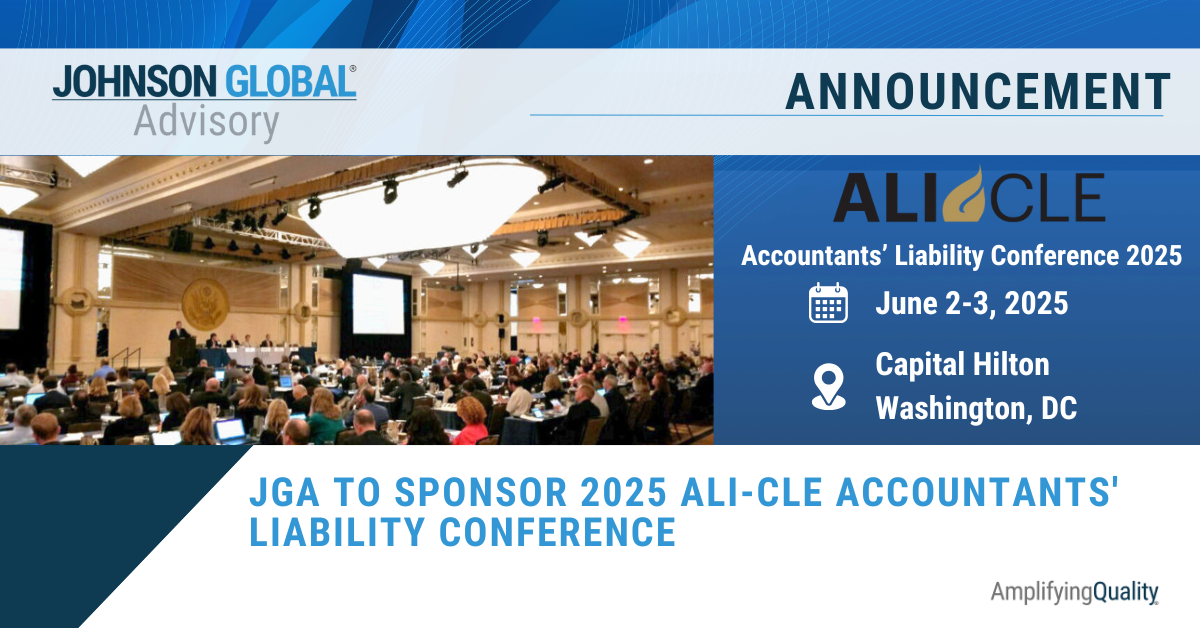



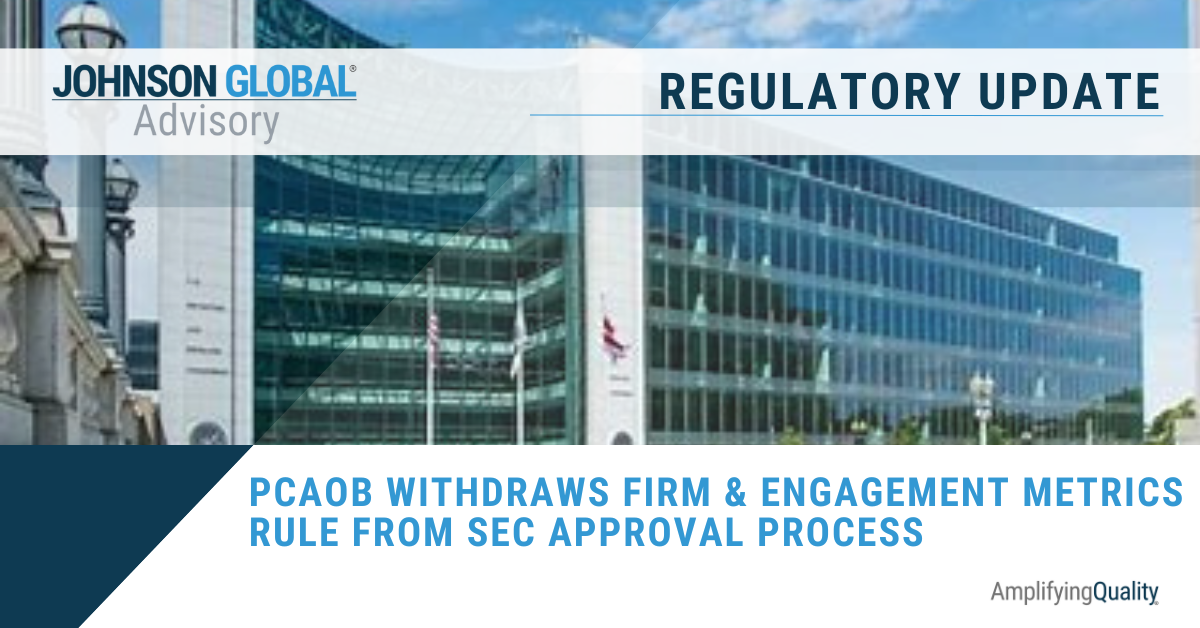
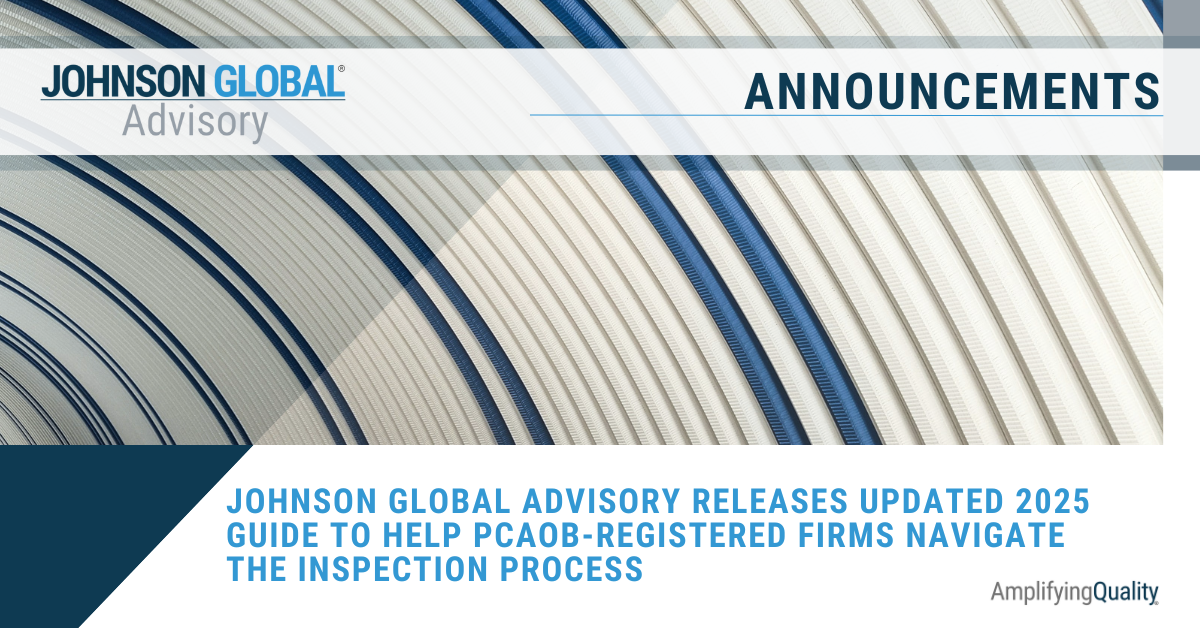

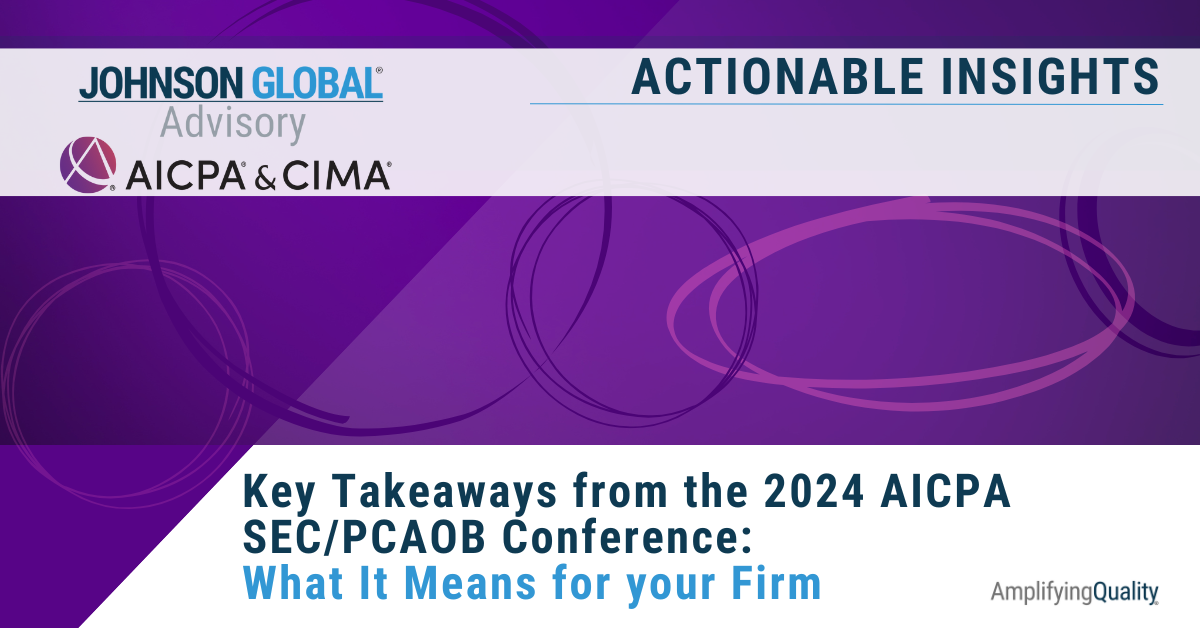


Johnson Global Advisory
1717 K Street NW, Suite 902
Washington, D.C. 20006
USA
+1 (702) 848-7084
